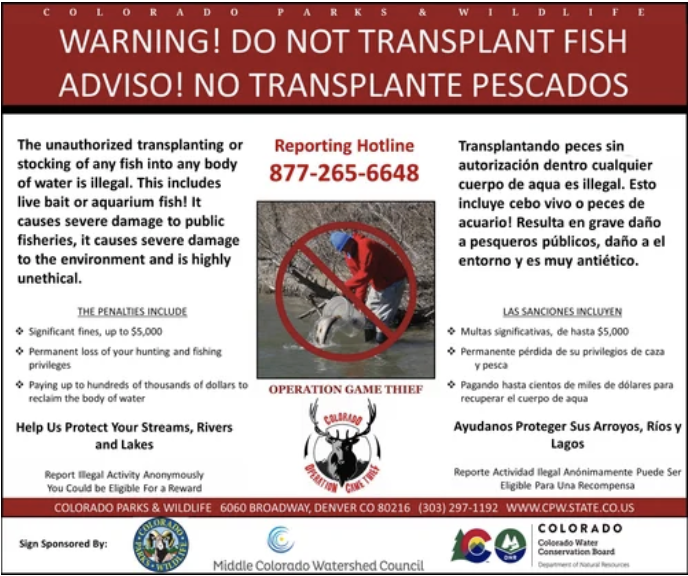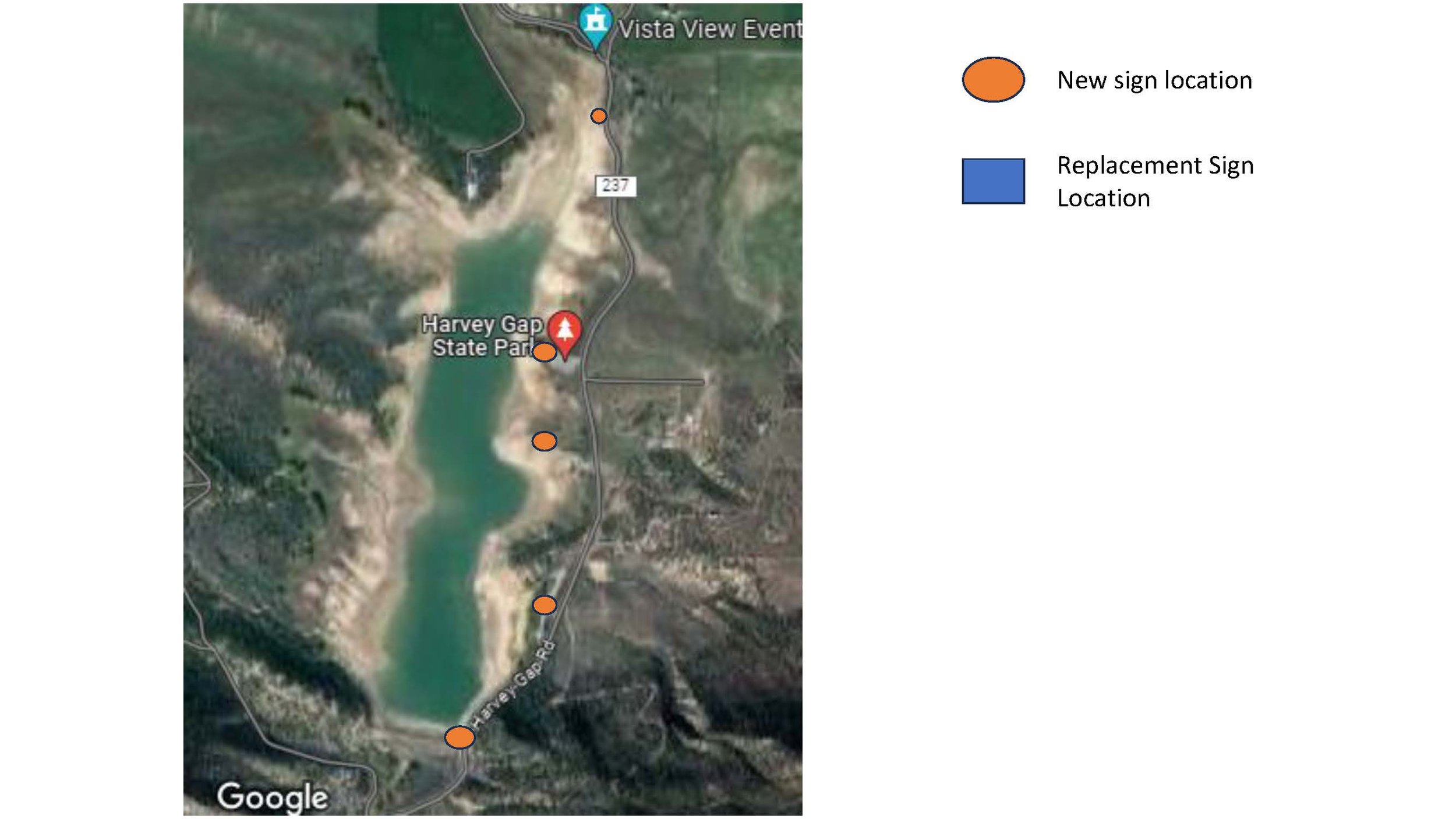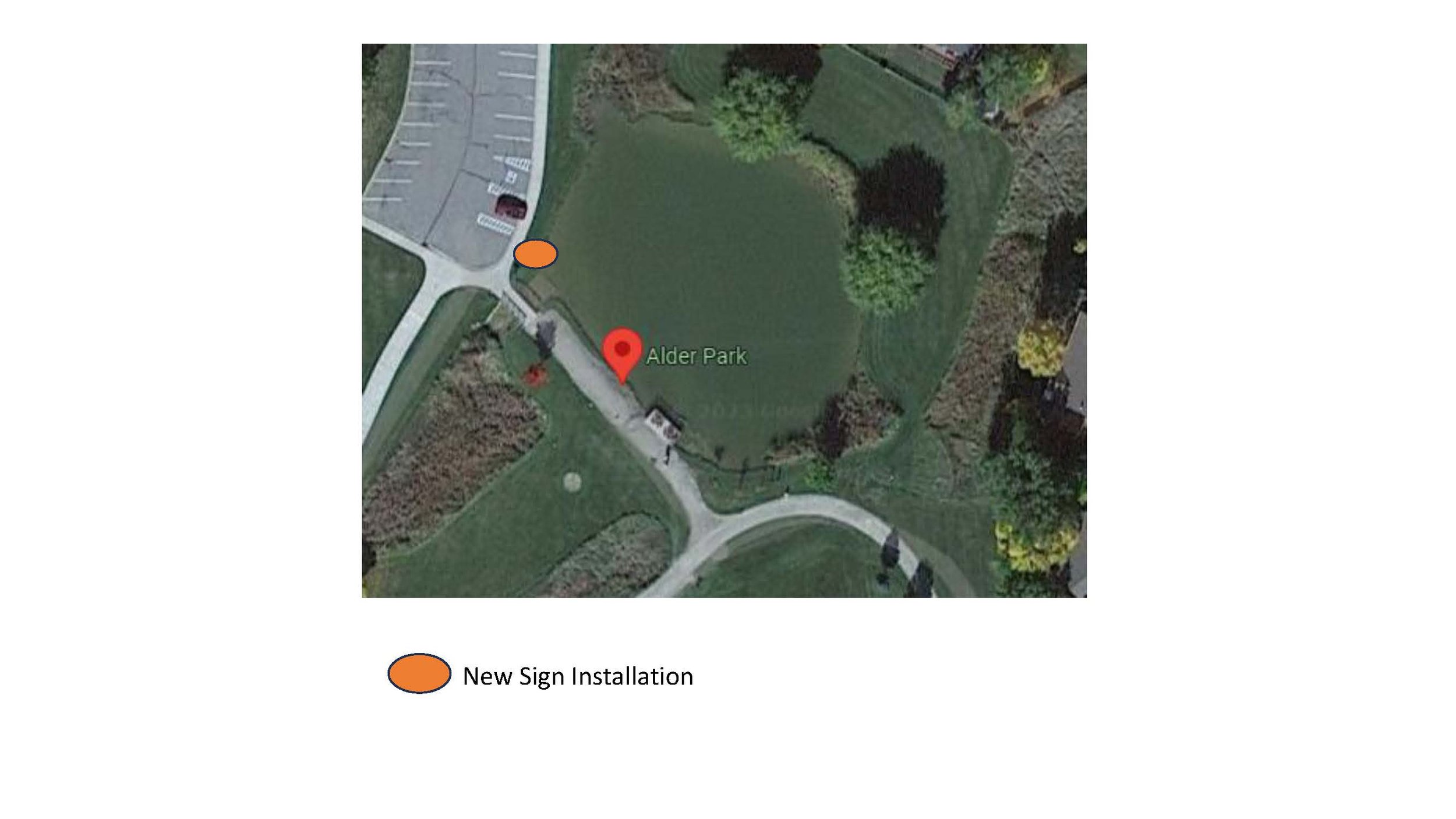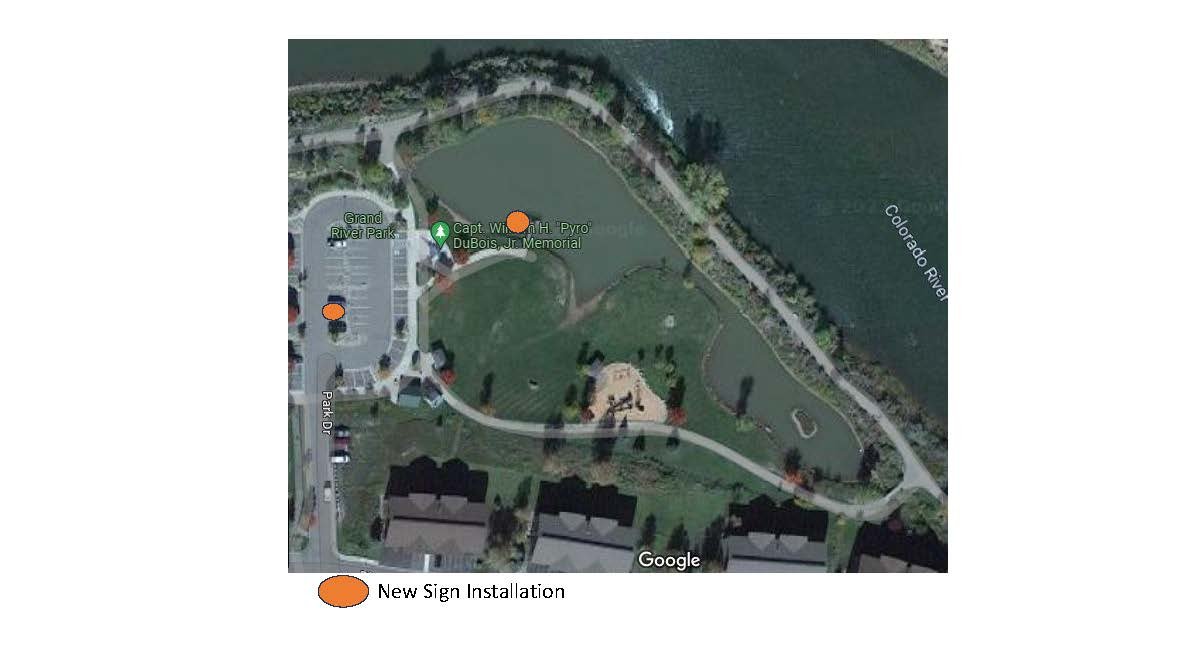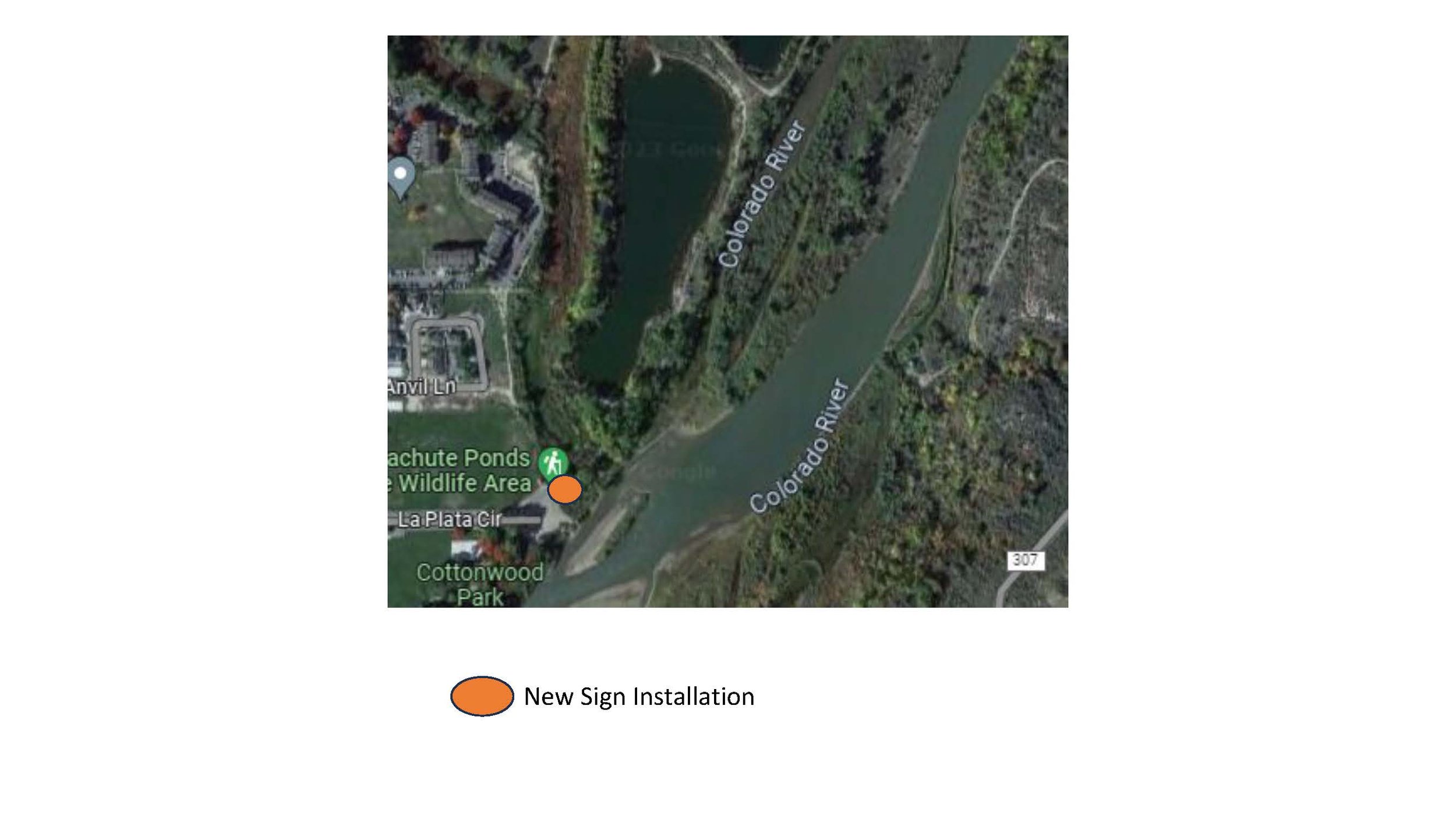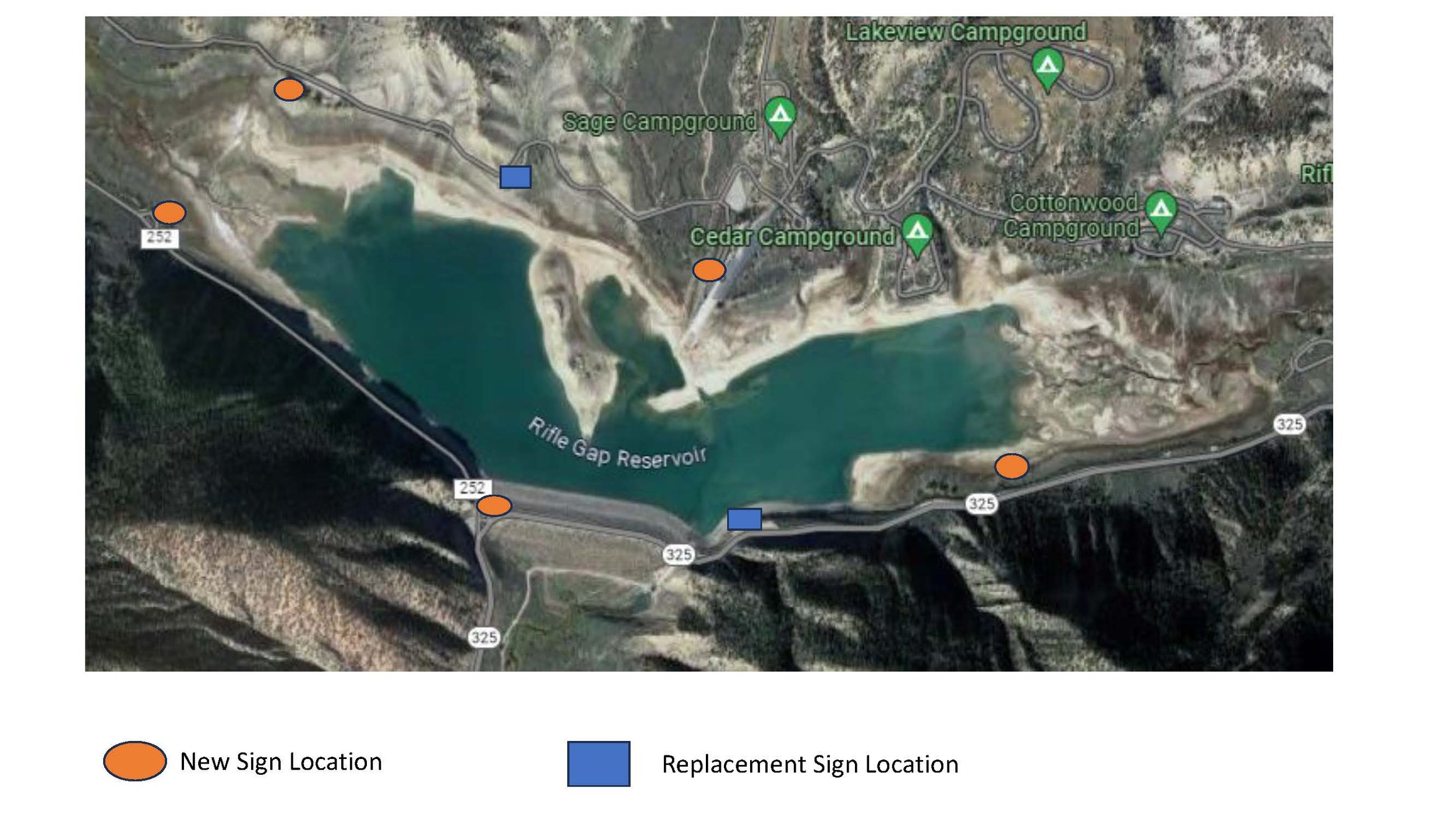Educational Signage Prohibiting Nonnative Fish Transport
Non-native fish introduced into the Colorado River mainstem negatively impact native fish through predation and competition for resources. Moving these nuisance species poses serious threats to public fisheries, damages the environment, and raises ethical concerns.
Working with Colorado Parks and Wildlife (CPW), MCWC updated and installed educational signage near gravel pits, public ponds, and other water bodies. The project has successfully raised awareness and encouraged responsible behavior to protect Colorado’s aquatic ecosystems.
Ecological Impact of Nonnative Fish
Introducing nonnative fish has wide-ranging consequences. Nonnative species with different feeding habits and reproductive strategies outcompete native fish for resources, altering the aquatic food web and affecting other species such as birds and mammals that rely on a balanced ecosystem.
Changes in fish populations also affect the size and quality of catches, reducing the recreational experience for anglers who expect diverse and healthy fisheries.Overall, nonnative species threaten aquatic biodiversity and compromise the long-term health of native fish populations and local ecosystems.
Signage Locations & Installation
The project installed signage at reservoirs and ponds with public access, selected in collaboration with CPW. Using an updated CPW format, MCWC installation was completed in fall 2023 at four locations with the help of CPW and New Castle city staff:
Rifle Gap Reservoir
Harvey Gap Reservoir
Alder Park, New Castle
Grand River Park, New Castle
Parachute Pond State Wildlife Area
Silt Preserve
Lions Park, Rifle
The signage educates the public about the ecological risks of moving nonnative fish. By understanding how these species impact native populations and aquatic ecosystems, visitors are encouraged to act responsibly and prevent the spread of harmful fish species. It also highlights ethical and safe recreational practices, showing how individual actions affect local fisheries and maintaining high-quality recreational experiences. By emphasizing the consequences of nonnative introductions, the signs support biodiversity protection and the long-term health of aquatic ecosystems.
Please contact MCWC at admin@midcowatershed.org with suggestions for additional locations that could benefit from educational signage.


